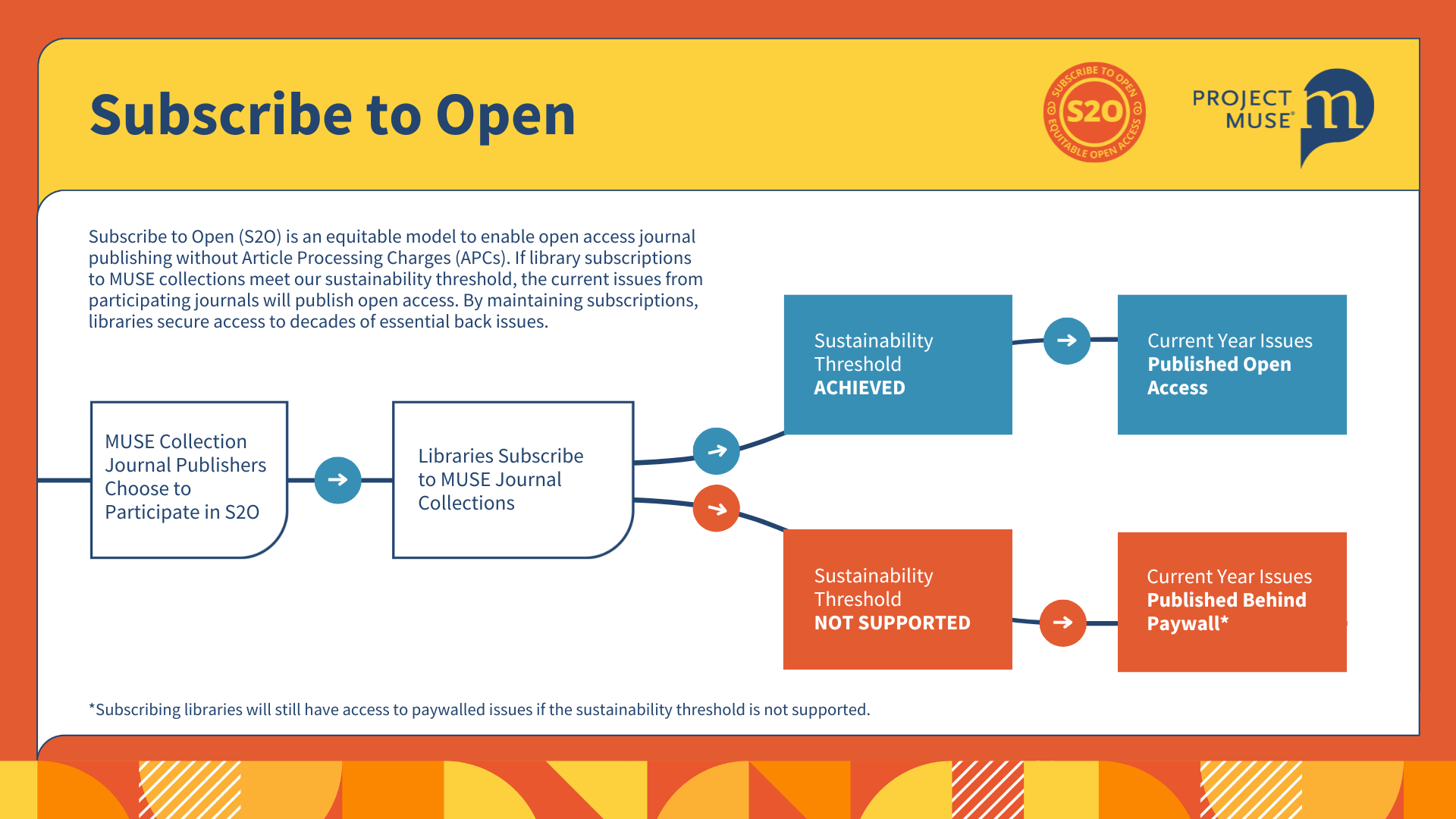Talk on funding models for Diamond Open Access journal publishing.
Online Publication Formats
Traditional
- No fees for authors, but paywalls/fees for readers
- typically via institutional subscriptions
- sometimes via individual subscriptions (e.g., subscription to PMLA bundled with MLA membership)
- rarely via fees for accessing individual articles
- Examples: most journals! ASAP/Journal, PMLA, GLQ, Postmodern Culture (online-only but subscription-based)
- Access Concerns: excludes some readers (those without institutional affiliation or affiliation with institutions with limited resources/subscriptions)
Green Open Access
- Self-archiving
- Examples
- institutional repositories
- arXiv.org
- academia.edu
- posting PDFs on a personal website
- Access Concerns: many publishers don’t allow this or impose embargoes. Also risk of bypassing or devaluing editorial work?
Gold OA
- No fees for readers, but fees for authors (Article Processing Charges or APCs, typically over $1000)
- Until recently, dominant model and priority for OA publishing
- Examples: some in the humanities, but much more common in the sciences (grant funding can be allocated to APCs)
- Access Concerns: Eliminates barriers for readers, but adds new ones for authors
- The Compact for OA Publishing Equity (COPE) initiative tried to address these barriers by advocating for academic employers to pledge to cover these costs, but as the list of signatories suggests, the program primarily benefitted scholars affiliated with the wealthiest unviersities.
Diamond OA
- No fees for anyone: where does the money come from???
- Examples:
- Fully Diamond OA: Post45 Journal, liquid blackness
- Sections / Issues: Modernism/modernity Print Plus & Journal of Cinema and Media Studies (JCMS)’s “Fifth Issue”
- Shift to OA
- Biden White House (led by scholar Alondra Nelson, then Deputy Director for Science and Society) announced that federally-funded research papers must be published open access beginning in 2026 (policy now wiped from whitehouse.gov, but available on the Internet Archive), though not necessarily diamond OA.
- cOAlition S and Plan S and Science Europe’s Action Plan for Diamond Open Access
Diamond OA Funding Models
Individual Sponsorships
- Examples: Post45 Journal at Emory
- Issues: single point of failure, risk of cuts
Community/Collective Fundraising
“Flipping” Journals to Diamond OA
- focuses on changing publication format (rather than sustaining existing OA or launching new OA)
“Subscribe to Open” schemes (hybrid / partial Diamond OA)
- Example: Project MUSE S2O Initiative

Flipping to Open Access
- Example: MIT Press shift+OPEN
The MIT Press welcomes applications for shift+OPEN, our new program designed to flip existing subscription-based journals to a diamond open access publishing model. Launched with generous funding from the Arcadia Fund and expanded with funding from the National Science Foundation, shift+OPEN seeks to catalyze needed change in journals publishing, introduce authors to new readerships, and increase the reach of vital scholarship that has previously been locked behind paywalls.
- Arcadia Fund is a family charitable foundation, founded by Lisbet Rausing and Peter Baldwin & one of the largest philanthropic organizations in the UK & one of the largest funders of open access initiatives, including the Wikimedia Foundation. The fund is not open to applications and seems to fund only large grants.
- Flipping to OA depends on grants or offsets/subsidies via portfolios of subscription/closed-access journals
Experimental Formats
- Browser Extension for readers to add funds to a wallet, then “tip” Diamond OA publishers whenever they read an article